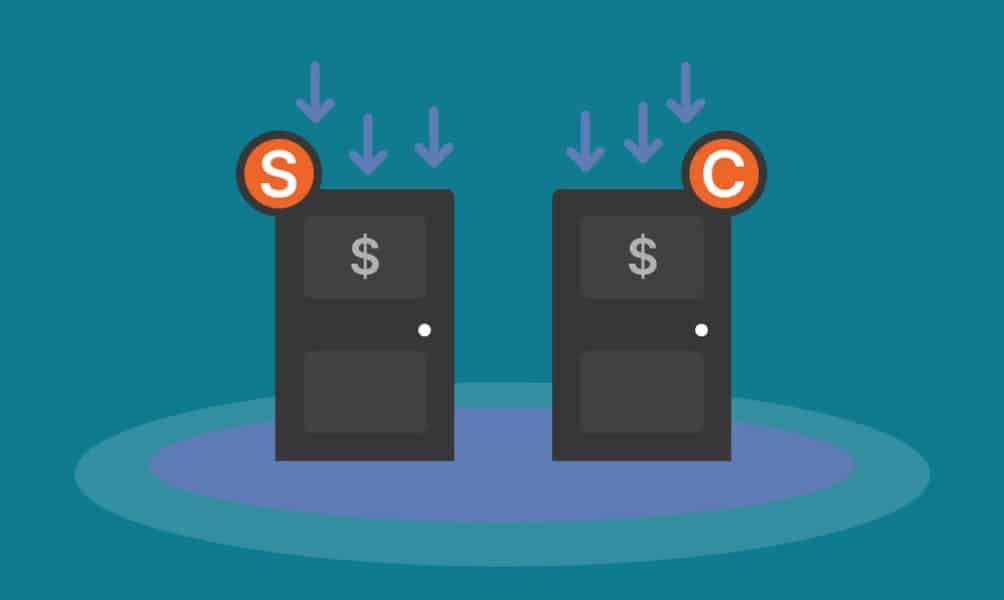When you start a business and form a limited liability company (LLC), you step into a brand new world. One major hurdle is the dreaded T word –tax ...
How to Choose Your LLC Tax Status
Written by: Carolyn Young
Carolyn Young is a business writer who focuses on entrepreneurial concepts and the business formation. She has over 25 years of experience in business roles, and has authored several entrepreneurship textbooks.
Edited by: David Lepeska
David has been writing and learning about business, finance and globalization for a quarter-century, starting with a small New York consulting firm in the 1990s.
Published on January 25, 2022

When starting a business, many entrepreneurs choose to form a limited liability company (LLC) because it offers real benefits, including serious liability protection. Another LLC tax advantage is that it offers real flexibility when it comes to paying business taxes, as detailed in this handy guide.
How LLCs Are Taxed
LLCs are unique in terms of taxation as their owners have a choice about how the company will be taxed. By default, revenue passes through the business to the owners, also known as the members, who report profits and losses on their individual tax returns.
The LLC itself is not taxed, which simplifies the process. Of course, the losses and operating costs of the business can be deducted from the members’ personal taxes. Taxes are paid at each member’s personal tax rate, though members may also need to pay self-employment taxes.
At the same time, LLC members can choose to have their LLC taxed as a corporation, either a C-corporation (C-Corp) or an S-corporation (S-Corp), as explained below.
| Tax Classification | Pros | Cons |
|---|---|---|
| Sole Proprietorship (Single-Member LLC) | 1. Simple tax filing as business income/loss is reported on your personal tax return. 2. No double taxation. | 1. Owner is personally liable for self-employment taxes. 2. Limited options for tax planning and deductions. |
| Partnership (Multi-Member LLC) | 1. Easy tax filing as each member reports their share of business income/loss on their personal tax return. 2. No double taxation. | 1. Members are personally liable for self-employment taxes. 2. Limited options for tax planning and deductions. |
| S-Corporation | 1. Potential tax savings as only wages (not entire business profit) are subject to self-employment taxes. 2. No double taxation. | 1. Strict eligibility requirements. 2. Need to pay reasonable salary to owner-employees, which might increase payroll tax liability. |
| C-Corporation | 1. Lower corporate tax rate might benefit profitable LLCs. 2. Greater options for tax planning and deductions. | 1. Double taxation as corporate profits are taxed and dividends to owners are also taxed. 2. More complex tax filing and record-keeping requirements. |
What Is the Default Tax Classification of an LLC?
If an LLC has only one member, it will, by default, be taxed as a sole proprietorship, which is considered a disregarded entity by the IRS. If an LLC has more than one member, it will, by default, be taxed as a general partnership.
In both cases, again, income passes through to the member or members to be reported on their personal tax returns.
Types of Tax Classifications for an LLC
LLCs have four possible tax classifications.
Sole Proprietorship (for a single-member LLC)
Again, if an LLC has only one member, it will be taxed as a sole proprietorship. The LLC is not taxed and does not have to file a tax return. Profits and losses pass through to the sole member to be reported on their personal tax return on Schedule C.
This is the simplest tax classification and tax reporting is very straightforward. For an LLC with only one member that is just getting started, it’s often wise to just stick with this tax plan.
The disadvantage of this classification is that the single member will be responsible for self-employment taxes in addition to income taxes. The self-employment tax rate is 15.3%, and those tax dollars fund Social Security and Medicare.
Partnership (for multi-member LLCs)
If an LLC has more than one member, it’s taxed as a general partnership. A multi-member LLC must file form 1065 with the IRS, which is the Return of Partnership Income. Attached to this will be K-1 forms for each member showing their share of business income.
The partnership return form is for informational purposes only. The LLC is still not taxed and the income, again, passes through to the members based on their ownership shares.
Again, this is generally best for new LLCs, but the disadvantage is that self-employment taxes apply.
S-Corporation
Members can elect S-Corp status for their LLC by filing Form 2553.
The IRS has several qualifications for S-Corp status eligibility. The company must:
- Be a domestic corporation
- Have only allowable shareholders
- May be individuals, certain trusts, and estates and;
- May not be partnerships, corporations or non-resident alien shareholders
- Have no more than 100 shareholders
- Have only one class of stock
- Not be an ineligible corporation (i.e. certain financial institutions, insurance companies, and domestic international sales corporations)
With S-Corp status, the LLC itself is not taxed, but must file form 1120S, the U.S. Income Tax Return for an S-Corp. Revenues again pass through to the owners, who must receive a “reasonable salary“, as defined by the IRS, before taking any profit distributions from the LLC.
Members will be responsible for employment taxes on their salary, but not for self-employment taxes on distributions taken above and beyond that salary. This, in fact, is the main reason business owners choose S-Corp status – to avoid self-employment taxes on distributions.
But keep in mind that S-Corp status comes with additional administrative requirements, which means added costs, such as payroll expenses.
C-Corp
C-Corp status means profits are taxed at the current rate for corporations (21% as of early 2023) which is often lower than the typical individual taxpayer rate. But C-Corp shareholders, including members, must also pay taxes on their distributions, though not self-employment taxes.
Thus, the C-Corp, like a corporation, is subject to what is referred to as double taxation.
How to Decide What Tax Classification is Right for You
In general, the income level of the LLC and of the members dictates when it’s beneficial to select C-Corp or S-Corp status (read here how to file taxes for an LLC with no income). S-Corp status is beneficial if the self-employment tax savings exceed the additional expenses of having an S-Corp.
C-Corp status is beneficial if members’ personal tax rate is higher than the corporate tax rate, but the additional administration expenses of a C-Corp must also be considered.
Determining when S-Corp or C-Corp status is the right move can get complicated, so you may want a bit of guidance from a tax advisor before making your decision.
In Closing
Among the many benefits of an LLC is tax flexibility, but it’s also a responsibility. Be sure to examine all your options before making your choice, as the wrong move could cost you dearly. You might consider hiring a tax professional before diving in, to ensure you do what’s best for you and your business.
LLC Tax Status FAQs
When it comes to LLC taxes, there is no one size fits all, but one of the key benefits of an LLC is the ability to choose your tax classification. The best tax classification depends on several factors and deciding whether an S-Corp or C-Corp is beneficial involves complicated calculations. Your best bet is to seek the help of a professional tax advisor when making your tax classification choice.
If you change your tax status from its default status, per the IRS rules, you can generally not change your tax status again for a period of 60 months.
Subscribe to Our Newsletter
and gain insider access to cutting-edge business insights and trends.
Featured Resources

How Do Limited Liability Companies (LLCs) Pay Taxes?
Published on January 22, 2023
Read Now

10 Best LLC Formation Services
Published on August 22, 2022
If you’re starting an LLC, the business entity formation process is one of the first and most important hurdles. This step can be terribly complex ...
Read Now

How to Pay Sales Tax for Small Business
Published on January 17, 2022
One of the best things about starting a new business is the taxes. Just kidding. But you will indeed have to deal with taxes, likely including sales ...
Read Now
Comments